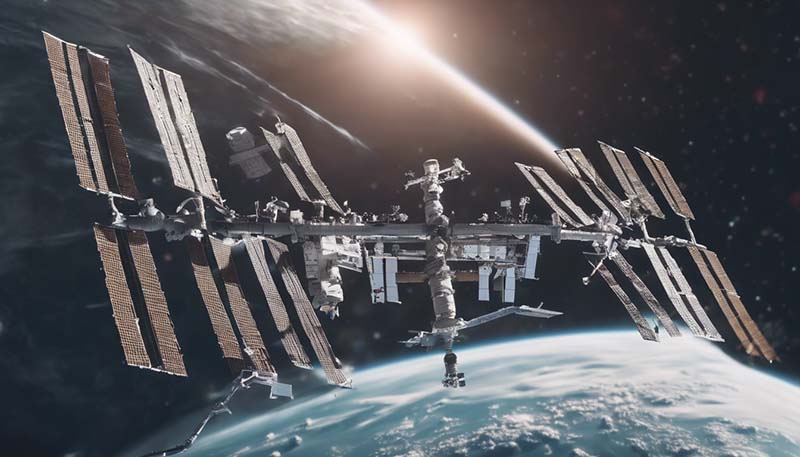The International Space Station (ISS) stands as a shining example of global cooperation in the realm of science, technology, and exploration. This colossal, state-of-the-art research facility orbits the Earth at an altitude of approximately 420 kilometers (260 miles) and serves as a beacon of unity for countries with diverse backgrounds and interests. The ISS not only represents the pinnacle of human achievement in space exploration but also serves as a model for international collaboration that can be applied to other fields and challenges facing our planet today.
History of the International Space Station
The concept of a permanently inhabited space station dates back to the late 1960s and early 1970s when both the United States and the Soviet Union began exploring the possibility of constructing large-scale orbital platforms. However, it wasn't until the late 1980s that the idea of an international space station gained traction. In 1984, President Ronald Reagan proposed the concept of a space station as a joint venture between the United States, the Soviet Union, and other nations. This idea eventually evolved into the International Space Station program, which now includes 15 countries and organizations as partners.
Collaboration Among Nations
The ISS is a testament to the power of international collaboration. The project brings together countries with different political systems, languages, and cultures, and yet they have managed to work together to create and maintain a cutting-edge research facility in the harsh environment of space. The ISS program is managed by a group of space agencies, including NASA (United States), Roscosmos (Russia), ESA (European Space Agency), JAXA (Japan Aerospace Exploration Agency), and CSA (Canadian Space Agency). These agencies, along with the space programs of participating countries, have contributed their resources, expertise, and technological innovations to make the ISS a reality.
Benefits of International Collaboration

-
Sharing of Resources and Expertise
The ISS program allows countries to pool their resources and expertise, which is essential for the development and operation of a complex space facility. This collaboration enables participating nations to share the costs and risks associated with space exploration, as well as to learn from each other's experiences and scientific knowledge.
-
Technological Advancements
Working together on a project of this magnitude encourages the development of new technologies and innovations. The ISS has led to numerous technological breakthroughs, such as advanced robotics, life support systems, and materials that can withstand the harsh conditions of space.
-
Cultural Exchange and Understanding
The ISS fosters cultural exchange and understanding among participating nations. Astronauts from different countries live and work together in close quarters, often for months at a time. This shared experience helps to break down cultural barriers and promote mutual understanding and respect.
-
Promoting Peace and Diplomacy
The ISS serves as a symbol of international cooperation and unity. By working together on a project of common interest, countries can build trust and foster positive relationships, which can contribute to peace and diplomacy on Earth.
Challenges and Future of the International Space Station
Despite its many successes, the ISS program has faced numerous challenges, including technical issues, budget constraints, and political tensions. The future of the ISS will depend on the continued commitment and cooperation of its partner nations. As the ISS approaches the end of its operational life, there are ongoing discussions about the possibility of extending its lifespan or developing a successor space station.
Potential Successors to the ISS
Several potential successors to the ISS have been proposed, including commercial space stations, lunar outposts, and Mars missions. These ambitious projects would require even greater levels of international collaboration and could further advance our understanding of space and our ability to explore it.
Conclusion
The International Space Station is a remarkable achievement that demonstrates the power of global collaboration in the pursuit of scientific discovery and technological innovation. As we look to the future, the lessons learned from the ISS can serve as a model for addressing other pressing challenges facing our planet, from climate change to global health crises. By continuing to work together and share our knowledge and resources, we can overcome obstacles and achieve even greater accomplishments in the realm of space exploration and beyond.
Leave Your Comments